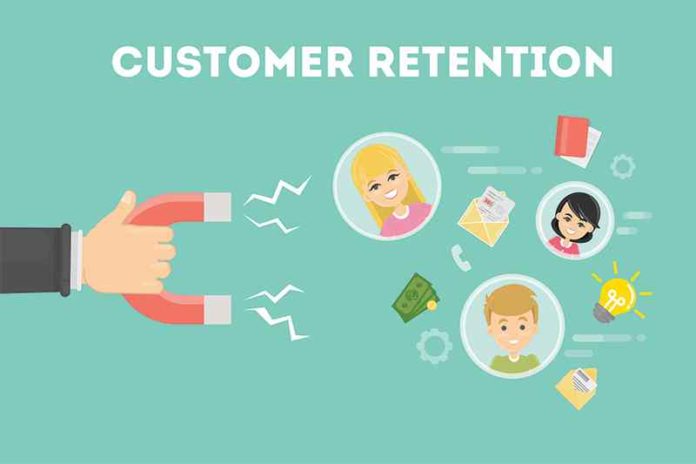When it comes to how, when, and where consumers do their shopping, they have more options than ever. This makes competition fierce for small businesses looking to capture a new customer or customers and grow their existing base.
By Jay Harlow
On the surface, the answer seems simple: attract new customers. However, customer acquisition takes significant investment, and even for marketing experts, it can be difficult to achieve results.
The reality is that it’s more cost-effective to keep your existing customers engaged than focusing solely on acquiring new customers. Studies show that acquiring a new customer is up to 25 times more expensive than retaining the ones you already have. In the U.S. alone, businesses lose more than $135 billion[i] annually due to consumer churn. Alternatively, an increase of 5% increment in customer retention rate can increase profit by 95%[ii], meaning that a business’s success in capturing loyal customers is indicative of their future success.
Luckily, small businesses’ options for increasing customer retention have expanded greatly, making it easier for you to grow and engage your customer base. There are two types of customer retention strategies that all small businesses should aim to deploy. The first is a set-it-and-forget-it approach, and the second is a proactive, campaign-based approach.
Set-it-and-forget-it Loyalty Programs
Picture this strategy as the digital version of the classic punch card at your local coffee shop. The challenge is identifying a promotion that is compelling enough to make customers want to visit multiple times, while making it easy to manage. Done right, this can be set up once and run in the background until you’re ready for a more hands-on plan of attack.
Traditional, non-digital loyalty programs can be a hassle to manage and costly to start up—from printing to replacing lost cards. It’s also difficult to keep track of loyal customers and reach out to customers to remind them to visit, as well as control fraud from individuals who try to game the system to get free merchandise.
Using a rewards and loyalty platform that integrates directly with your point-of-sale (POS) system prevents cluttered countertops and streamlines the process. A cloud-based system will also let you can manage your program from either your POS device or from an online dashboard.
Here are the top two elements of success:
- Build the right offer: Start by deciding which type of loyalty program to set-up. Will you reward customers based on number of visits or amount spent? To choose, there’s a fairly straightforward rule of thumb: if your business is a low-ticket company (e.g. an ice cream parlor or pizza by the slice), choose to reward customers based on the frequency of the visits. If it’s a larger ticket item (e.g. a clothing boutique or sports outfitter), center rewards on the amount spent.
- Consider offering gift cards as a loyalty reward: Research shows that consumers spend more on gift card transactions. This is a win-win: you’ll get repeat customers and they will spend more during a visit.
Build an Active Customer Retention Strategy
While this strategy may require more work, it can pay massive dividends—turning one-time visitors into repeat shoppers, and loyal customers into evangelists. This tactic involves building a sophisticated loyalty program that offers personalized, timely rewards and promotions. Larger enterprises use this method, but it is also a great strategy for entrepreneurs to compete with big businesses.
Here are the top four tips on how to implement:
- Build an audience: The success of this strategy is based on having a good mailing list. Offer incentives for customers who join the mailing list. Use your list to build out a customer profile — when do they shop, what do they buy — and then tailor promotions to your most loyal customers.
- Get to know your customers: Use a Customer Relationship Management (CRM) tool to keep track of your customer information and their order history. With this information, you can build better promotions with personalized rewards, have your employees greet them by name when they come into your location, give birthday surprises, and more.
- Ask for feedback: Collecting private feedback is an important tool to understanding your customers and building lasting relationships. Use a tool that enables you invite customers to connect privately. Letting people vent directly can prevent angry reviews from reaching the public eye.
- Turn a regular customer into a VIP: Repeat customers spend 67% more than new customers, and second-time customers refer an average of three people to the business. Reward your biggest spenders and most loyal customers with special VIP perks to help build good will.
The bottom line is that customer retention shouldn’t be ignored. When done well, it can boost your revenue, save money, stabilize cash flow, and help your business stand out from the competition. Remember – it’s easier than you think to set up a loyalty program and your customers will thank you by coming back time and time again.
Jay Harlow is the vice president of design for Clover, the fastest-growing point-of-sale platform for small businesses that offers nearly 400 business solutions through Clover App Market to streamline merchant operations – from managing payroll and HR, checking inventory to pulling real-time sales data and offering digital loyalty programs.
[i] https://learn.callminer.com/whitepapers/callminerindex-us-consumers-switch-by-sector
[ii] https://hbswk.hbs.edu/archive/the-economics-of-e-loyalty
Customer retention stock photo by Inspiring/Shutterstock







